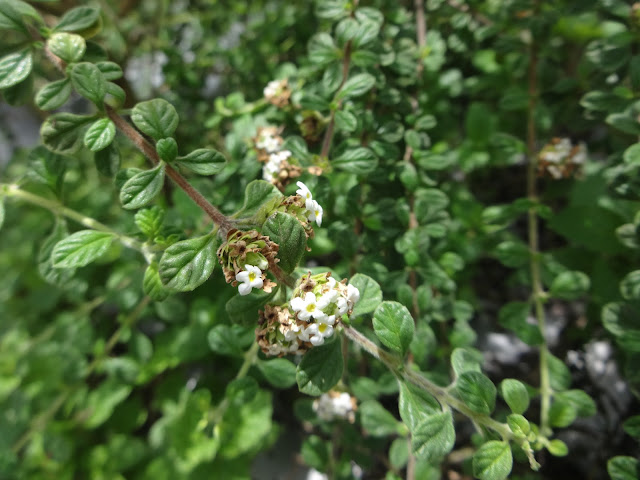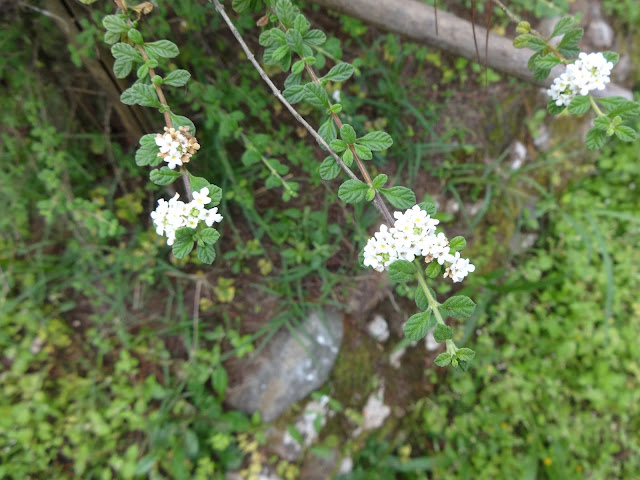
PLANT PROFILE
Orthosiphon stamineus also called Orthosiphon aristatus is a small, perrenial shrub native to tropical Asia. Its habitat range span from India, threw Myanmar, Thailand, Laos,Vietnam, China, Malaysia, Indonesia, the Philippines, down to Australia. In late nineteenth century it has been brought to Europe by Dutch traders. It is characteristic for having extraordinary long flower stamens, which brought it common name Cat's Whiskers. Those flowers are making it look so beautifull that it became cultivated for purely ornamental purposes and many people don't realize medicinal values of this plant. Cat's Whiskers is one of the oldest medicinaly used herbs in tropical Asia, as in many regions one of mostly used herbs nowdays. Even though this herb was listed in Nederlandish Pharmacopaeia over 60 years ago, it is still barely known and hard to get in Europe, but its popularity seems to grow all around the world. On Java Island pleasantly tasting infusion of Orthosiphon stamineus, is such a common drink, that in many countries it can be found under name of Java Tea or Javan Tea. Its other common name is Kidney Tea or Indian Kidney Tea. In Indonesia this herb is called Kumis Kucing, on Java Island - Remujung, in Malaysia - Misai Kuching, in China - Shen Cha, Shen Cha Shu and Mao Xu Cao, in India - Warak Leikham, in the Philippines - Kabling Gubat, Kabling Parang and Balbas Pusa, in Thailand - Yaa-nuat-maeo, Rau Meo i Cay Bac, in Cambodia - Kapen Prey. Its forgoten latin synonymes are Orthosiphon grandiflorus, Orthosiphon spicatus, Clerodendranthus spicatus, Clerodendrum spicatum, Ocimum aristatum, and Ocimum grandiflorum.

CULTIVATION AND HARVESTING
Cat's Whiskers is tropical, perrenial shrub, that is growing just up tp 60cm height but sometimes reaching even 1,5m in hight and diameter. With highly ornamental, white or slightly violet flowers, that bloom in august and september, it is often found in tropical gardens as a ornamental plant. In nature, it inhabit banks of streams and thickets, it likes wet compost, neutral or slightly alcaline soils and strong light. It is said to cope with temperatures slightly below 0'C, but its better to keep it as a house plant in temperate climate regions. Leaves or whole stems with flowers, are best to gather before or just when it starts to bloom, left flowers should be cut off soon after it fade to encourage formation of new flower buds.
 COSMETIC USES
COSMETIC USES Cerams and tonics containing extract of Orthosiphon stamineus are designed for greasy skin care. This herb is reducing production of sebum and visible pore size improving skin texture and appearance. It is also beneficial beneficial for the skin, thanks to its antioxidant and antibacterial properties. It is also said to have a whitening effect on skin. Drinking Java Tea is helping to get rid of cellulite.
CULINARY USES
Tea is made of Cat's Whiskers leaves and flowers (dried or fresh), which is drunk both hot and cold for its delicate bitterish taste, and for general health improwement.
MEDICINAL USES
Orthosiphon stamineus is one of the oldest and most populary used herbal medicines in South east Asia. Nowadays it is approwed for many ailments, by many medical government authorities in different countries all around the world.
Leaves and flowers of Orthosiphon stamineus are mainly used dried or fresh in form of infusion, but capsules, pills and extracts are also available on market.
This herb is known mainly for its effectivenes in fighting urinary tract infections and inflammations and genitourinary diseases, thanks to its diuretic ( saluretic, uricosuric, natriuretic, kaliuretic, azoturic), antiinflammatory and antimicrobial action. But it have many other properties as well, it is : strongly antioxidant, astringent, cholagogue, hepatoprotective, gastroprotective, renal protective, antidiabetic, mildly antispasmodic, anti-alergic, antihyperlipidemic, analgesic, vasodialative, antihypertensive, antibacterial, antiviral, antifungal and antitumor.
All those powers combined makes it helpfull in conditions like : uremia, gallstones, kidney stones, nephritis, dysuria, ascitis, edema, syphilis, gonorrhoea, arthretism, rheumatism, hepatitis, jaundice tonsillitis, atherosclerosis, hypertension, diabetes mellitus, eruptive fever, epilepsy, menstrual disorders and cancer.
In his book '' the Green Pharmacy '', Dr. James A. Duke wrote about Java Tea - '' the suspicion is that it helps open the ureters - the tubes leading from the kidneys to the bladder - allowing small stones to be passed.'' Others authors claimed that it helps to dissolve the stones. Drinking Kidney Tea protects kidneys from toxic action of heavy metals. Chewed leaves of Cat's Whiskers are hold in place of toothache to ease the pain
Orthosiphon stamineus is rich in potassium salts (0,738g in 100g of fresh leaves), oleanolic acid, ursolic acid, rosmarinic acid and few other caffeic acid derivatives, flavonoids (sinensetin and eupatorin, salvigenin, quercetin), diterpens (staminol, orthosiphols, neoorthosiphols), alkaloids (orthosiphonin), tanins, saponins, polyphenols, terpenoids, choline and volatile oil (contain mostly beta-caryophyllene, alfa-humulene and beta-elemene)
The se of this herb over long period in big ammounts lead to the body's low sodium lewel. Caution should be taken by people with cardiac and renal insufficiency. It also can sometimes interact in a bad way, with medicines for diabetes and diuretics.

Sources
'' Herbal Drugs and Phytopharmaceuticals '' - Max Wichtl, CRC Press 2004
'' Jamu: Ancient Indonesian Art of Herbal Healing '' - Susan-Jane Beers, Turtle Publishing 2013
'' Botanical Medicine : A European Professional Perspective '' - Dan Kenner, Yves Requena, Paradigm Publications 2001
'' Developments in Sustainable Chemical and Bioprocess Technology '' - Pogaku Ravindra, Awang Bono, Christopher Chu, Springer Science & Buisness Media 2013
'' Diabetes Mellitus and Human Health Care '' - Ann George, Robin Augustine, Mathew Sebastian, CRC Press 2014
'' the Green Pharmacy '' - Dr. James A. Duke, Rodale 2003
'' CRC World Dictionary of Medicinal and Poisonous Plants '' - Umberto Quattrocchi, CRC Press 2012
'' Medicinal Plants of the Philippines '' - dr. Eduardo Quisumbing, Katha Publishing 1978
'' Useful Plants of the Philippines '' Volume 3 - William H. Brown, Acorn Press 1950
'' Healthy Plants '' - Dr. George D. Pamplona-Roger, Editorial Safeliz 2007
'' Mga Halamang Nakagagaling '' Book 2 - Luisa Villafuerte, Mindmaster Publishing Inc. 2015
http://www.stuartxchange.com/KablingGubat.html
http://davesgarden.com/guides/pf/go/2085/#b
http://examine.com/supplements/orthosiphon-stamineus/
http://www.globinmed.com/index.php?option=com_content&view=article&id=101972:orthosiphon-stamineus-benth&catid=209&Itemid=143
http://www.scielo.br/scielo.php?script=sci_arttext&pid=S0102-695X2013000300016
http://globalresearchonline.net/journalcontents/v24-2/14.pdf
http://www.irjponline.com/admin/php/uploads/1765_pdf.pdf
http://www.webmd.com/vitamins-supplements/ingredientmono-707-java%20tea.aspx?activeingredientid=707&activeingredientname=java%20tea
http://www.koop-phyto.org/en/medicinal-plants/cats-whiskers-orthosiphon.php
http://www.botanical-journeys-plant-guides.com/cat-whiskers.html
http://www.ncbi.nlm.nih.gov/pubmed/20807263
http://www.herbastudio.pl/en/Katalog/Kosmetyki/BEST-Tonik.html
http://www.ifrj.upm.edu.my/20%20(05)%202013/49%20IFRJ%2020%20(05)%202013%20Yaya%20060.pdf
http://kcms.daegu.ac.kr/user/sck1111/pdf/chemical%20composition%20and%20anti-fungal.pdf
http://rac1.mardi.gov.my/index.php/publication/issues/current/148-2015a/volume-43-no-2/875-430206
http://www.google.com.ar/patents/EP2370052A1?cl=en
http://www.webmedcentral.com/article_view/1361
http://www.globinmed.com/index.php?option=com_content&view=article&id=79215:orthosiphon-stamineus&catid=199&Itemid=139
http://www.researchgate.net/publication/230587805_Orthosiphon_stamineus_Traditional_Uses_Phytochemistry_Pharmacology_and_Toxicology
http://www.pharmacologyweekly.com/articles/Misai-Kucing-Java-Tea-Orthosiphon-stamineus-mechanism-uric-acid-gout
http://www.sci-int.com/pdf/3888853187-Final%20A%20SURVEY%20Koay%20%20Malaysia%20133-138.pdf
























































